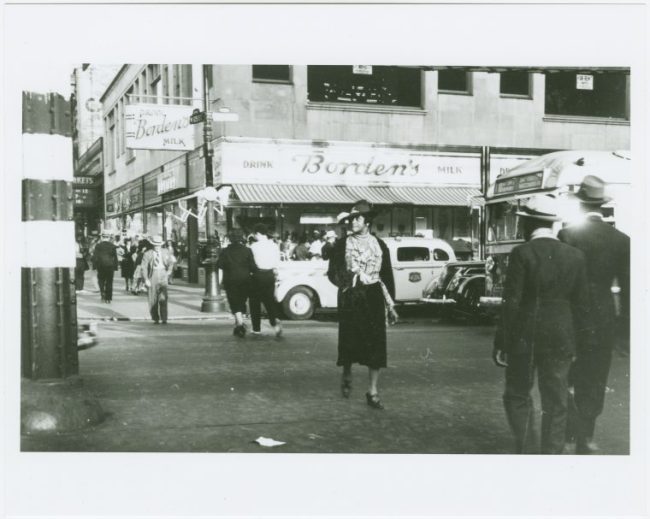
In September 2024, the City Council passed legislation allowing pedestrians to cross the street at any time without adhering to traffic signals. The law allowing jaywalking officially goes into effect in February 2025 .
This is a watershed moment for pedestrian rights , which were curtailed in the 1920s by car manufacturers to benefit cars drivers. This is a perfect illustration of the car culture: a deeply ingrained rule and penalty against a class of citizens who are simply guilty of not driving cars. This rule stole dignity and time from pedestrians, who are the slowest users moving in the street. For example, if one is in the middle of an 800 ft long block and wants to cross, one has to walk 400ft and then wait for the light and go back 400 ft. This is adding about 6 minutes to the trip, a non-negligable impact especially if you are older or disabled. And one is still at high risk to be injured or killed due to turning cars that rush in the crossing.
With this legislation, in one fell swoop all streets in New York City are converted to Shared Streets. It is a loud and clear statement that NO street belongs exclusively to cars
Supporters of the bill believe this legislation is a step toward improving racial justice. New York police officers have historically faced criticism for targeting people of color with jaywalking tickets. “In 2023, over 92% of jaywalking citations went to Black and Latino New Yorkers,”
The first known reference to Jay walking dates to December 1913, says Peter Norton, a history professor at the University of Virginia and author of Fighting Traffic – The Dawn of the Motor Age in the American City. That month a department store in Syracuse hired a Santa Claus who stood on the street with a megaphone, bellowing at people who didn’t cross properly and calling them jaywalkers.
“I don’t know how this got to Syracuse, but in mid-western slang a jay was a person from the country who was an empty-headed chatterbox, like a bluejay,” he says. The word was first used to describe “someone from the countryside who goes to the city and is so dazzled by the lights and the show windows that they keep stopping and getting in the way of other pedestrians”.
The use of jaywalking as a term of ridicule against pedestrians crossing roads took off in the 1920s. A key moment, says Norton, was a petition signed by 42,000 people in Cincinnati in 1923 to limit the speed of cars mechanically to 25mph (40kph). Though the petition failed, an alarmed auto industry scrambled to shift the blame for pedestrian casualties from drivers to walkers.
And this is where the disdain for the pedestrian class came from and when drivers got the message that pedestrians were fair game when they were not in narrowly delineated spaces.
Transportation Alternatives who pushed for the legislation says “New York City is one of the very first cities in the country to legalize jaywalking. This is a historic moment, and an important step forward for our city. This bill alone isn’t enough – our city must do more to affirm pedestrians’ rights and redesign our streets, especially during one of the deadliest years for pedestrians in the past decade – but it will undoubtedly improve New York City.”
Damn right !
